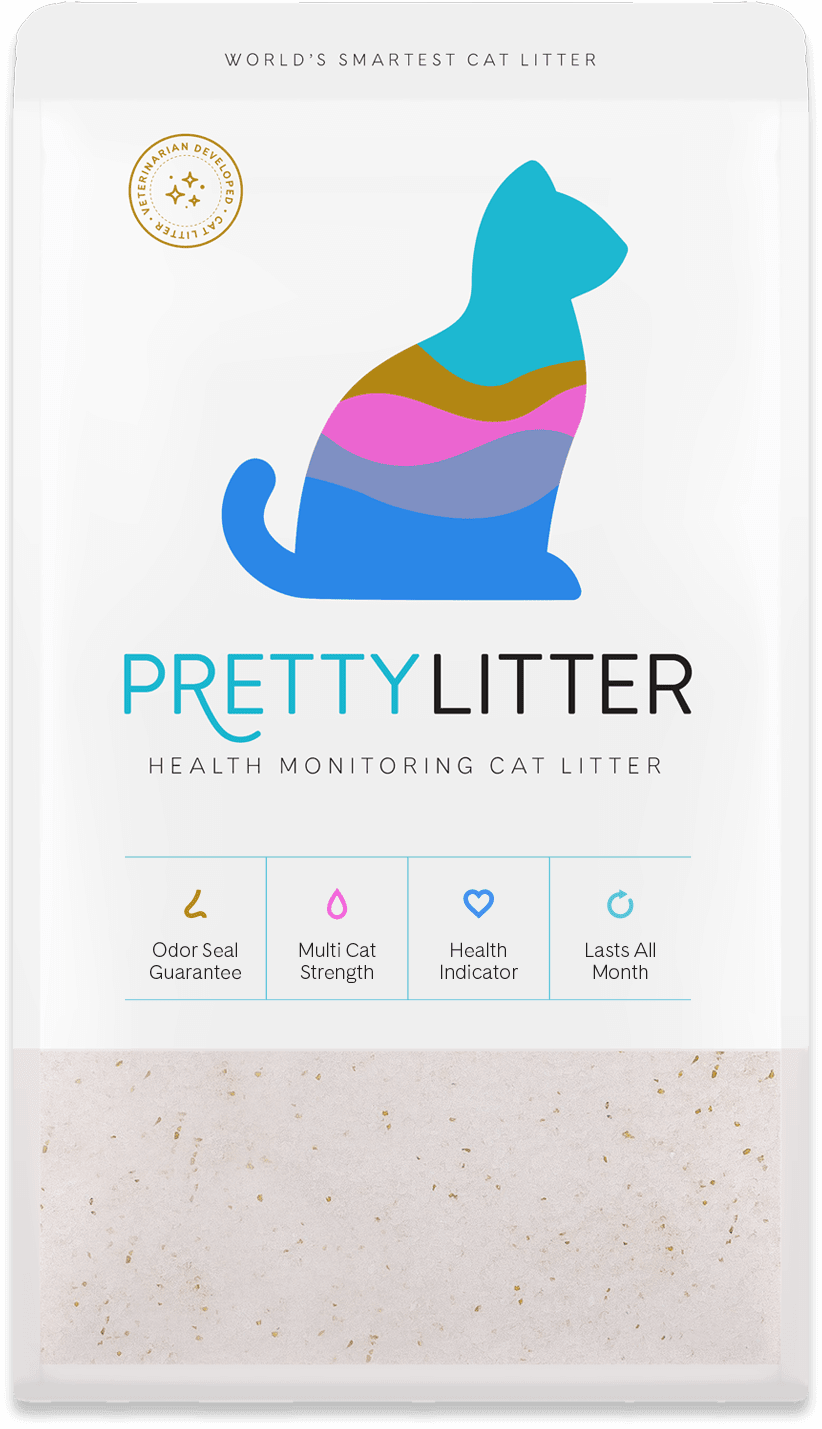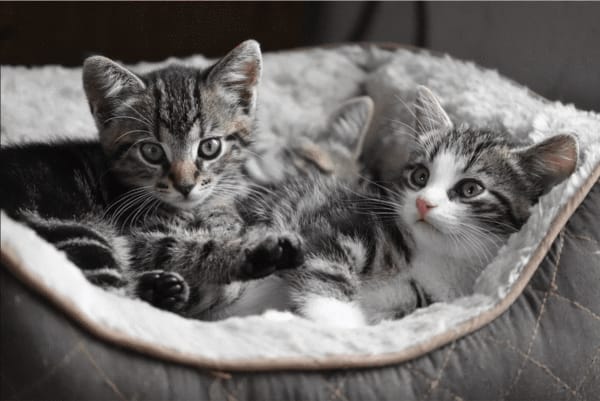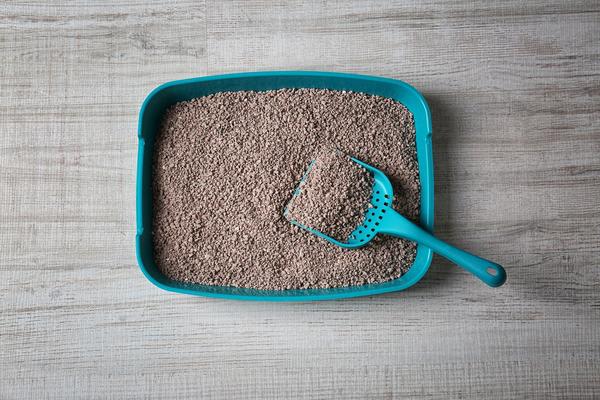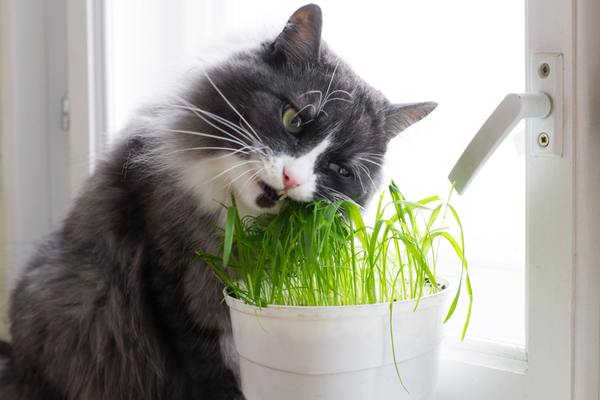June 21, 2025 |9 min read
How to Stop Food Aggression in Cats

Written by

For many cat parents, mealtime should feel like a cozy ritual: soft paws padding into the kitchen, a little tail twitch of excitement, and the satisfying crunch of kibble. But what happens when your cat turns into a mealtime menace? If your feline friend growls, hisses, lunges, or guards their bowl like buried treasure, you might be facing something called food aggression in cats.
This behavior can feel jarring, especially coming from your usually cuddly companion. But the good news for you is that this behavior can be gently redirected with patience, understanding, and a little structure. Let’s dive into what’s behind this aggressive behavior, why it happens, and most importantly, how to stop food aggression in cats so they can dine in peace.
What Is Food Aggression in Cats?
Some cats eat like royalty: dignified, slow, and with an air of aloof superiority. Others, though? They act like they haven’t eaten in years, the moment you crack open a can. But how do you know when it crosses the line from enthusiasm to food aggression? Food aggression in cats can look different depending on the individual, but common signs include:
- Growling or hissing during mealtime
- Lunging or swatting if you or another pet gets too close
- Guarding behavior around their food bowl or treats
- Rapid, frantic eating, like they’re afraid someone will take it away
- Pacing or meowing excessively before meals
- Trying to steal food from other cats (or your plate!)
These behaviors aren’t just quirky or “hangry” habits. They’re signs that your cat feels some level of threat, anxiety, or competition around food.
How It Differs from Normal Feeding Behavior
It’s totally normal for cats to get excited at mealtime. A little meowing, a happy tail flick, or zoomies to the food bowl are nothing to worry about. But when your cat’s excitement comes with tension, aggression, or distress, it’s time to look deeper.
Food aggression can also affect your cat’s health and your household harmony. Left unaddressed, it may worsen over time, especially in multi-cat homes where competition fuels the fire.
Cat Litter That Prioritizes Their
Health & Your Happiness.
to get your first bag for only $14.99
Common Causes of Food Aggression
Before you can address the behavior, it’s important to understand why it’s happening. Food aggression typically stems from unmet needs, fear, or past experiences. When you identify the root, you’re better equipped to support your cat with compassion and consistency.
Medical Issues or Past Trauma
Sometimes food guarding or aggressive eating habits stem from early life experiences. Cats who were strays, rescued from shelters, or weaned too early may have learned to fight for every meal. Food aggression in kittens can linger into adulthood if not addressed early.
And in some cases, medical concerns might be playing a role. A cat who suddenly becomes food-obsessed or unusually defensive might be dealing with issues like hyperthyroidism or nutrient absorption problems. While we won’t diagnose here, it's always worth talking to your vet if you notice sudden changes in eating behavior.
Competition or Stress in Multi-Cat Households
In a multi-cat home, feeding time can feel like a battleground. Even if your cats generally get along, competition for resources, especially food, can spark tension. This is especially true if bowls are placed close together or one cat consistently dominates the feeding area.
Cats are territorial by nature, and sharing space can lead to subtle stress signals that manifest during meals. Think of it like trying to enjoy dinner with someone looming over your shoulder; it’s hard to relax.
If one cat is wolfing down their food and then swiping bites from another’s bowl, or if you're seeing growling or swatting between housemates, it’s time to restructure your feeding routine.
How to Stop Food Aggression in Cats
Now that we’ve explored the “why” behind the behavior, let’s dig into the “how” to fix it. Reversing cat food aggressive behavior is about rewiring mealtime from a moment of survival into a moment of safety and predictability. With a bit of training and thoughtful planning, you can help your cat feel secure around food again.
5 Training Techniques and Feeding Strategies
If you’re dealing with food aggression in kittens, early intervention makes a big difference. For adult cats, consistency and patience are key. Here’s where to start:
-
Establish a routine
Cats love a schedule. When food shows up at the same time every day, they stop worrying about when their next meal is coming. Try to feed at consistent times, even on weekends. This takes the guesswork out of their day and helps reduce anxiety-driven behavior.
-
Use puzzle feeders
Slow down frantic eaters and engage your cat’s brain by introducing puzzle feeders or treat-dispensing toys. These make meals more interactive and can reduce the urge to gulp food defensively.
-
Separate feeding stations
If you have multiple cats to feed at once, create separate meal zones. Feed them in different rooms, or use baby gates or feeding barriers to provide a sense of privacy.
-
Stay calm and hands-off during meals
Avoid hovering, petting, or moving bowls mid-meal. Your presence can be interpreted as a threat, even if it’s well-intentioned. Give your cat space to eat without interruption, and only approach once they’ve walked away on their own.
-
Reward calm behavior
Use positive reinforcement to reinforce calmness. If your cat sits quietly while you prepare food, offer a small treat or a gentle pet. Over time, they’ll start associating patience with rewards.
Creating a Calm, Structured Mealtime Environment
Your feeding space should feel like a safe haven. That means no chaos, no noise, and no unexpected interruptions. Try these tips when it’s feeding time:
- Serve meals in the same quiet location every time.
- Minimize household traffic during feeding (no kids running through or dogs sniffing nearby).
- Use calming pheromone diffusers near the feeding area to help reduce overall stress.
- Keep bowls clean and fresh. Cats are sensitive to smell and texture, and old residue can turn them off or trigger anxiety.
PrettyLitter cat parents already know the power of structure when it comes to the litter box. After all, PrettyLitter’s just scoop and stir routine makes freshness easy. You can bring the same kind of predictability to your cat’s mealtime, helping them feel just as secure when they eat as when they do their other business.
When to Get Help and Where to Find Support
While most cats respond well to structure and training, some situations may need a little extra backup.
When to Involve a Vet or Feline Behaviorist
If your cat’s aggression is escalating or if there’s any risk of injury to people or pets, it’s time to bring in a pro. Veterinarians can rule out underlying health conditions that may be contributing to the behavior. And certified feline behaviorists can work with you one-on-one to develop a tailored plan for your household. Here are a few signs that professional help may be necessary:
- Your cat bites or scratches during meals.
- There’s frequent tension or fights between cats during mealtime.
- The behavior persists despite consistent training.
- You feel overwhelmed or unsure how to proceed.
Remember: You’re not failing your cat by asking for help. You’re advocating for them, which is one of the kindest things you can do.

Finding Peace at Mealtime
Food aggression in cats can be stressful—but with patience, consistency, and a little insight into what your cat is really feeling, mealtime can become a peaceful part of your daily rhythm again. Whether you're working with a rescued stray or navigating dynamics in a multi-cat home, the goal is not perfection—it’s progress. With the right strategies and support, you can help your cat feel safe, confident, and calm when it matters most.
Sources:
- Dupont Veterinary Clinic. Food Aggression in Cats. https://www.dupontvet.com/blog/food-aggression-in-cats/
- Cornell Feline Health Center. Feline Behavior Problems: Aggression. https://www.vet.cornell.edu/departments-centers-and-institutes/cornell-feline-health-center/health-information/feline-health-topics/feline-behavior-problems-aggression
- National Association of Professional Pet Sitters. Food Aggression in Cats: All You Need to Know. https://petsitters.org/page/FoodAggressioninCatsAllYouNeedtoKnow







